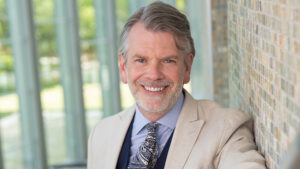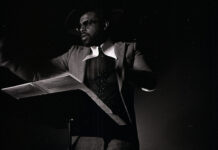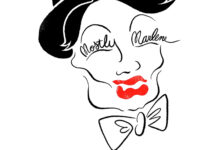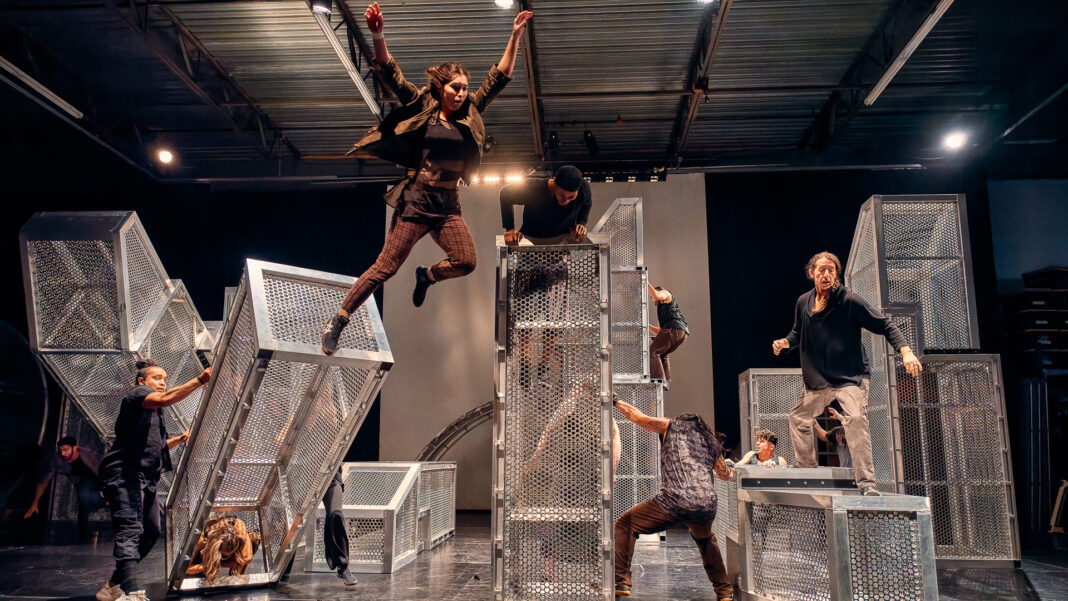If you lived in the Los Angeles area on January 17, 1994 you probably know exactly where you were at 4:31 AM. That’s when a devastating 6.7 earthquake reminded us of the risks associated with living in this area. Nowhere was that more deeply felt (no pun intended) than in Northridge – the epicenter of the earthquake. Tomorrow, on the 30th anniversary of what is known as the Northridge Earthquake, The Soraya on the Cal State University Northridge campus will present Existencia: 30 Years After the Northridge Earthquake. This was the brainchild of The Soraya’s Executive and Artistic Director Thor Steingraber.

Given that Steingraber has had a long association with Jacques Heim, Founder and Creative Director of Diavolo, it should come as no surprise that he turned to Heim to create a performance piece that celebrates the perseverance required to rebuild the CSUN campus and the surrounding communities in the aftermath of the earthquake.
Joining Diavlo for this world premiere are vocalist Thana Alexander and drummer Antonio Sánchez who have composed the score for Existencia and will be performing it live.
There are two performances: one on January 17th and a second one on January 19th
Recently I spoke with Steingraber about the two very different earthquakes that are front and center in his world right now: the Northridge Earthquake that is the inspiration for Existencia and the seismic shifts in the performing arts that has Steingraber asking how many arts institutions will survive even this year.
What follows are excerpts from our conversation that have been edited for length and clarity. To see the full interview, please go to our YouTube channel.
Q: You told me many years ago that the word earthquake was verboten and not to be used on the Cal State University Northridge campus. What has changed that has allowed you the opportunity to explore the arts as a mechanism for acknowledging the 30th anniversary of the Northridge earthquake?
Places are defined by pivotal moments. Sometimes those pivotal moments are extremely positive and memorable. Sometimes those pivotal moments are disasters or catastrophes. I don’t think one will ever think of Tiananmen Square without thinking of 1989. Northridge, for better or worse – some would say for worse – has been defined by an earthquake for three decades. There was a real interest at a certain point after the long and challenging process of rebuilding, which took the better part of a decade, where one wants to be known for other things. However, it doesn’t change the history, right?
Then President Brenda Wilson, against all odds, actually reopened the campus two weeks later for classes. Then it took another decade to rebuild it. So what we’re celebrating, if you will, is that perseverance, that resilience that built back better in the months and years following the earthquake.
At what point did it strike you as the right time to reach out to someone like Jacques Heim to create something and how long ago did that happen?

It was about two years of planning. That’s what it takes to plan a major premiere of a new piece. 30 years is funny. You think of 25 or 50 or something like that, but it’s almost two generations. Many people who survived the earthquake are no longer with us. Any adult, even up to the age of, let’s say, 34, 35 years old, won’t have a memory of it. But there’s still a significant portion of the population of LA in the Valley who do have very vivid memories of it, but they’re now distant enough that maybe an evening of art isn’t painful or triggering for them.
Maybe this is the right amount of time to sort of put it in context with all the other things they know about disasters and about human behavior and human recovery.
Why Jacques? Why Diavolo?
Jacques Heim lived through the Northridge earthquake. He had just established his company here in Northridge, funny enough, on Proscenium Avenue in a warehouse. He lived in Hollywood, and he has very, very clear memories of the Northridge earthquake. He said, in fact, that the Northridge earthquake influenced what Diavolo the company became. Which was about danger, about confronting danger.
They do things that are very physically challenging. Those are the qualities in the work. But it’s so much more than that because he’s also someone who uses structures, he uses architecture, he uses the built environment to both destruct and reconstruct. He created a company influenced by that moment in his life.
I spoke to Jacques in 2020 during the pandemic. He said, “I know we are in the middle of a complete disaster. But behind disaster, eventually we will see the light, but we have a long way ahead of us.” In your role as Executive and Artistic Director at The Soraya, what role does art play in your own life, apart from the venue, in allowing you to get to the other side of a disaster, to find that light that he talked about?
Whether it’s a performance or, for some people it’s temple or church, people have to be together. And we live in a world where people are not together, at least not in a meaningful, substantive, positive way very often. Any difficult or raw human experience or emotion that a community or disparate peoples experience, I feel like in order to really process it you can’t be alone. I view that as one of the primary functions of a performance venue.
As we announced this performance, people became very emotional about participating in it, coming to it, being in the audience for it. What we’re not doing is recreating an earthquake. This is an artistic response to it. One of the things that’s been really interesting in the last two years working with Jacques on this, is that he has decided that the most interesting thing about challenges or catastrophes or disasters is that they do bring people together in a way that our ordinary lives don’t. That by coming together we have the opportunity to build something better. So that is very much his artistic rendering. It’s filled with, as you would expect from Diavolo, things falling and coming apart and wildly athletic and physical performances by dancers who are top of their form and accomplishing things that become these bigger than life representations of what a human undergoes when the Earth beneath them is no longer reliable, when gravity is no longer reliable.
Maybe there is something that that’s a bigger picture about what we can still learn about how we can be better or how we can respond post-pandemic. It seems like Existencia is not just about 30 years ago. It’s about 30 days ago.
The pandemic is particularly insidious in this way because it was, first of all, global. No corner of the globe was exempted. We often think of disasters as being very specific to a location. It was kind of insidious because it didn’t destroy the world in an instant. It destroyed the fabric of the human experience in the world, which is a much more subtle thing to both recognize and to repair. So there is definitely that relativity to the current moment. The pandemic is no small part of that for sure.
One thing the the pandemic did do was create enormous challenges for people who are in your position because the arts have had an incredibly challenging time getting people back into the theater. To paraphrase the last line of Putting It Together from Sunday in the Park with George by Stephen Sondheim, what is, from your perspective, the state of the arts right now?

Perilous. No one in my position ever wants to be honest because there’s no benefit to being honest. You don’t attract ticket buyers by saying the theater’s half empty. You don’t attract donors by saying it’s all on the edge of the cliff. But when we are honest, and I just roll that way, it’s going to take a miracle for the performing arts in Los Angeles to persevere through. I would say during 2020 that we will be able to maintain the illusion through 2023, and in 2024 it will all come unraveled.
What I mean by that is that’s when all the relief dollars would run out. That’s when the reality of whatever the future is for ticket buying, for philanthropy, for all of the things. Even on the artist side, so many artists, artistic organizations, have not reconvened or regrouped. An entire generation of young artists lost a really important formative time of their training and their practice.
This is what I know because I speak to all of my colleagues. There are very few in private who will say that everything is just fine. There are very few. There are some. But for the most part, it doesn’t matter whether it’s Los Angeles or New York or anywhere else. It’s a challenging moment because costs are as much as 30% higher and revenue is as much as 20% lower. It doesn’t take a genius to know that 50% gap has to be filled by something. And for most organizations, for the last to two-and-a-half, maybe three years, it’s been filled by relief dollars which are now gone.
If this is something that you were forecasting a while ago, how do you mitigate that? How do you move beyond it?
I don’t think you do. I think we’re going to see lots of arts organizations simply shut down. Look, there’s no arts section left in the L.A. Times. There are obviously important journalists doing work like you’re doing, but not reaching the same number of doorsteps. We were given arts news every day. And now most Angelenos get none, ever. Zero. Marketing is 2 to 3 times the cost that it used to be, because you’re not just competing with another arts organization on the arts page of the L.A. Times, you’re competing with Nike for digital space.
I do think that certain arts organizations emerge. Certain trends start to favor certain alternatives and hopefully live performance alternatives. Certain things rise to the top. When we say cultural or artistic Darwinism, what we mean is that only some survive and the rest don’t. I think we’re going to be in that moment and we’re going to head into the 2028 Olympics in a city with a field that is a shadow of its former self. It’s too bad because the 1984 Olympics were one of the most important moments, pivotal moments, in the arts in Los Angeles.
We will have 44 years between Olympics and in that 44-year time, we will have seen the arts rise in Los Angeles, and we will see the arts reach some sort of pinnacle and then decline to some degree or another. That’s just the reality right there. Not enough dollars in Los Angeles to fix it.
I hope that that things improve, because I, for one, can’t imagine living life without the arts, whether it’s here or anywhere else.
The things I love most: the performing arts, all the arts, public radio, mom and pop restaurants – these are all things that are imperiled right now. When you put them all into a bucket together, what do they represent? They basically represent all of the things that are not mass market, large conglomerate, call it whatever you may. They’re the very human side of creation that are not driven solely by a profit margin. There are people who say without a profit margin, maybe you deserve to be imperiled. Obviously I can immediately provide a retort, which is any human being may look at the things that they love most and see that they’re not actually attached to a profit.
Hopefully as Northridge did, as CSUN did, you can rise out of a tragedy or circumstances that seem to imperil your very existence and still find a way to to come out of it better and stronger.
No choice. You have to try.
To see the full interview with Thor Steingraber, please go here.
Main Photo: Diavolo rehearses Existencia: 30 Years after the Northridge Earthquake in their LA Studio (Photo by George Simian/Courtesy The Soraya)










